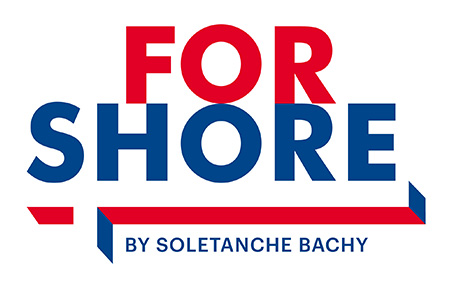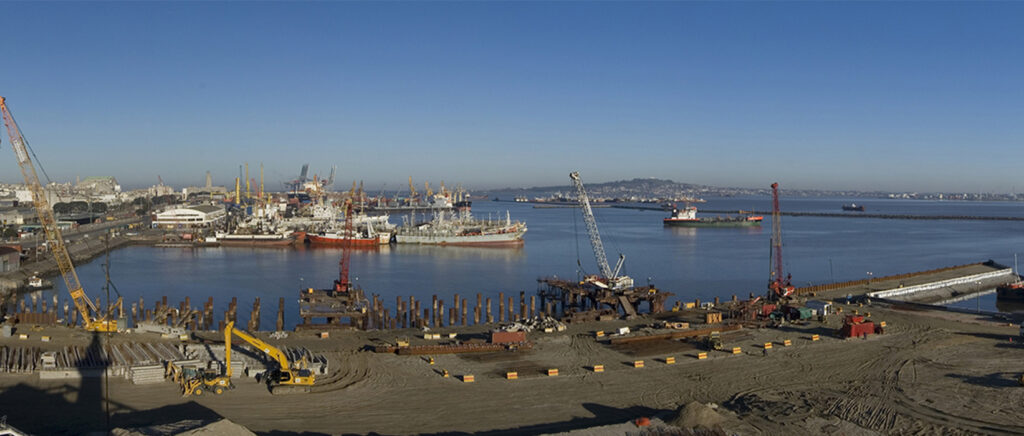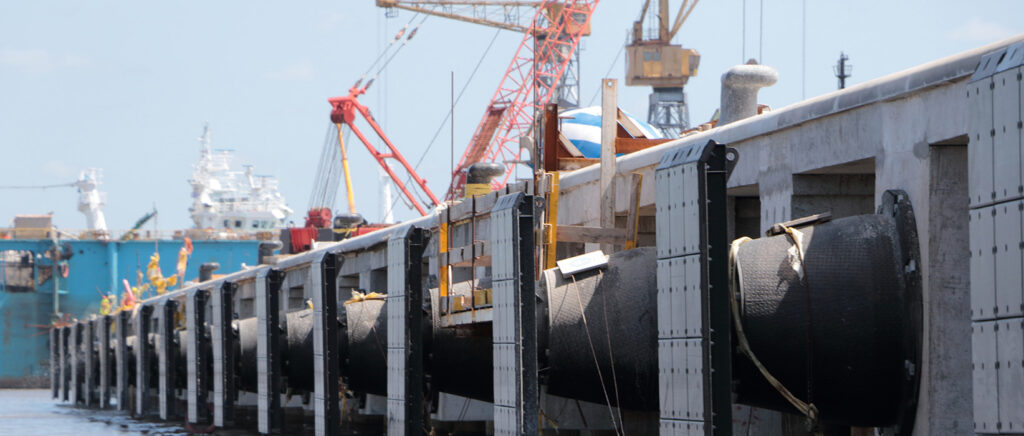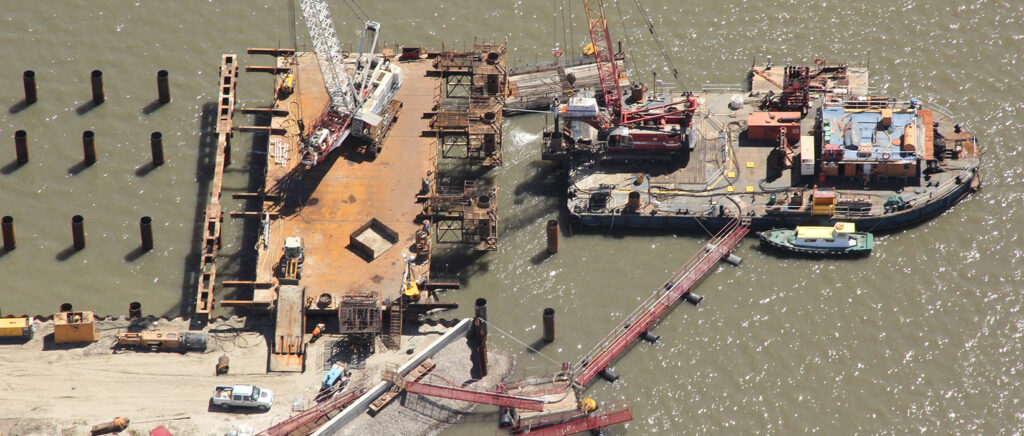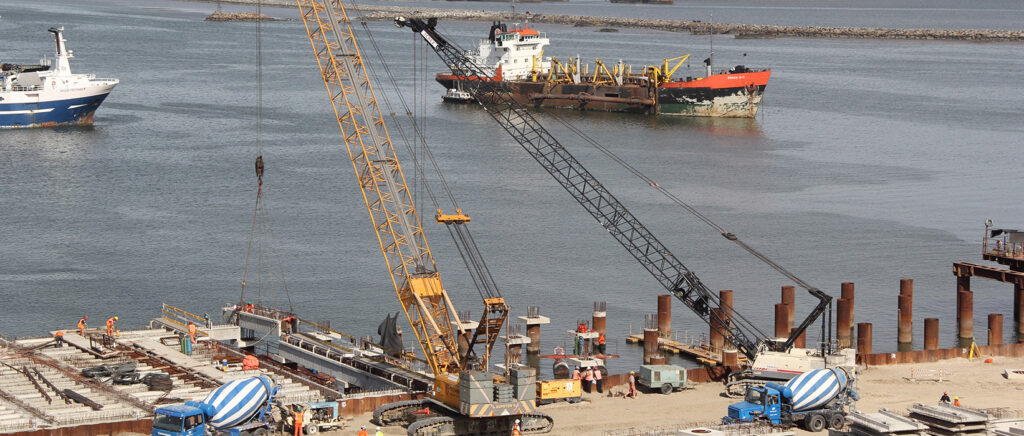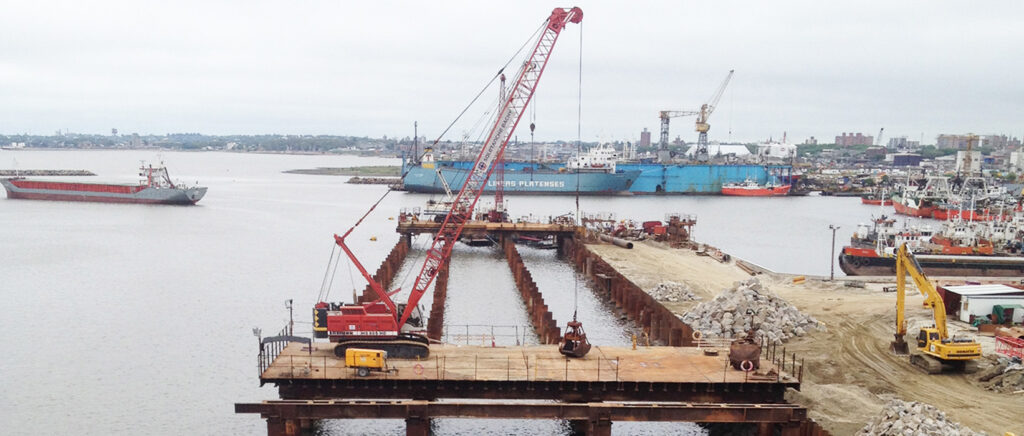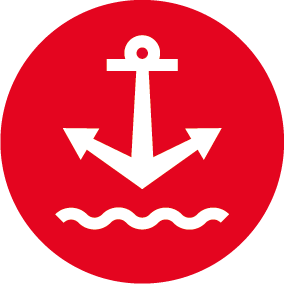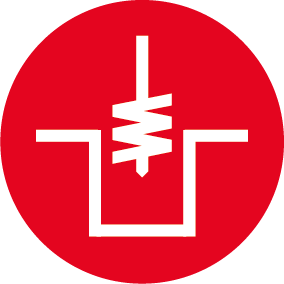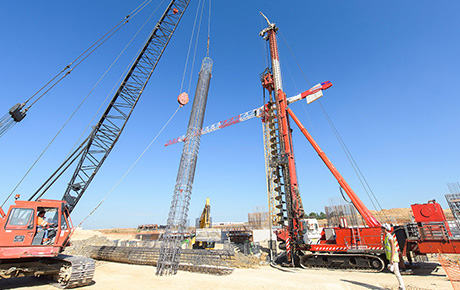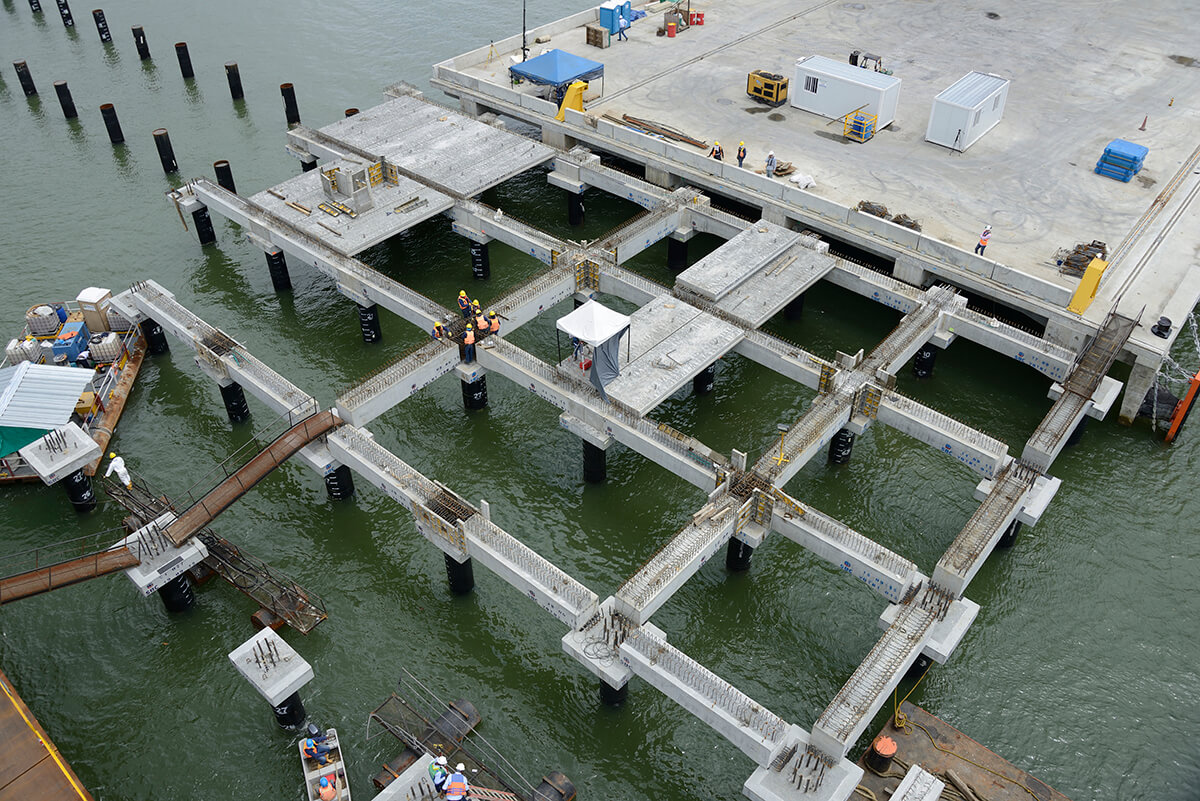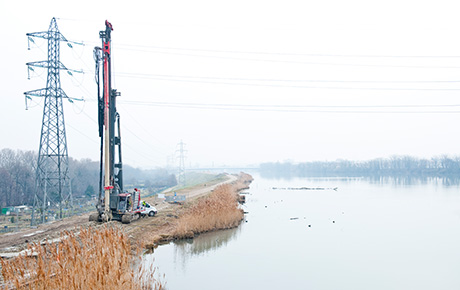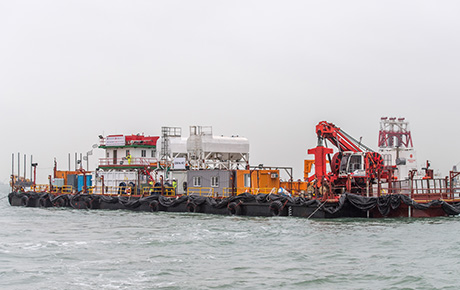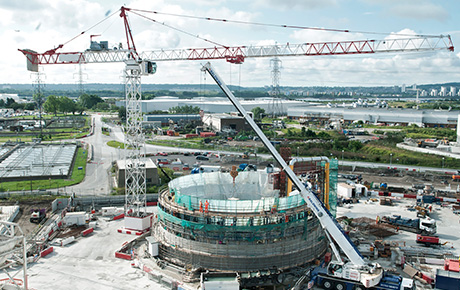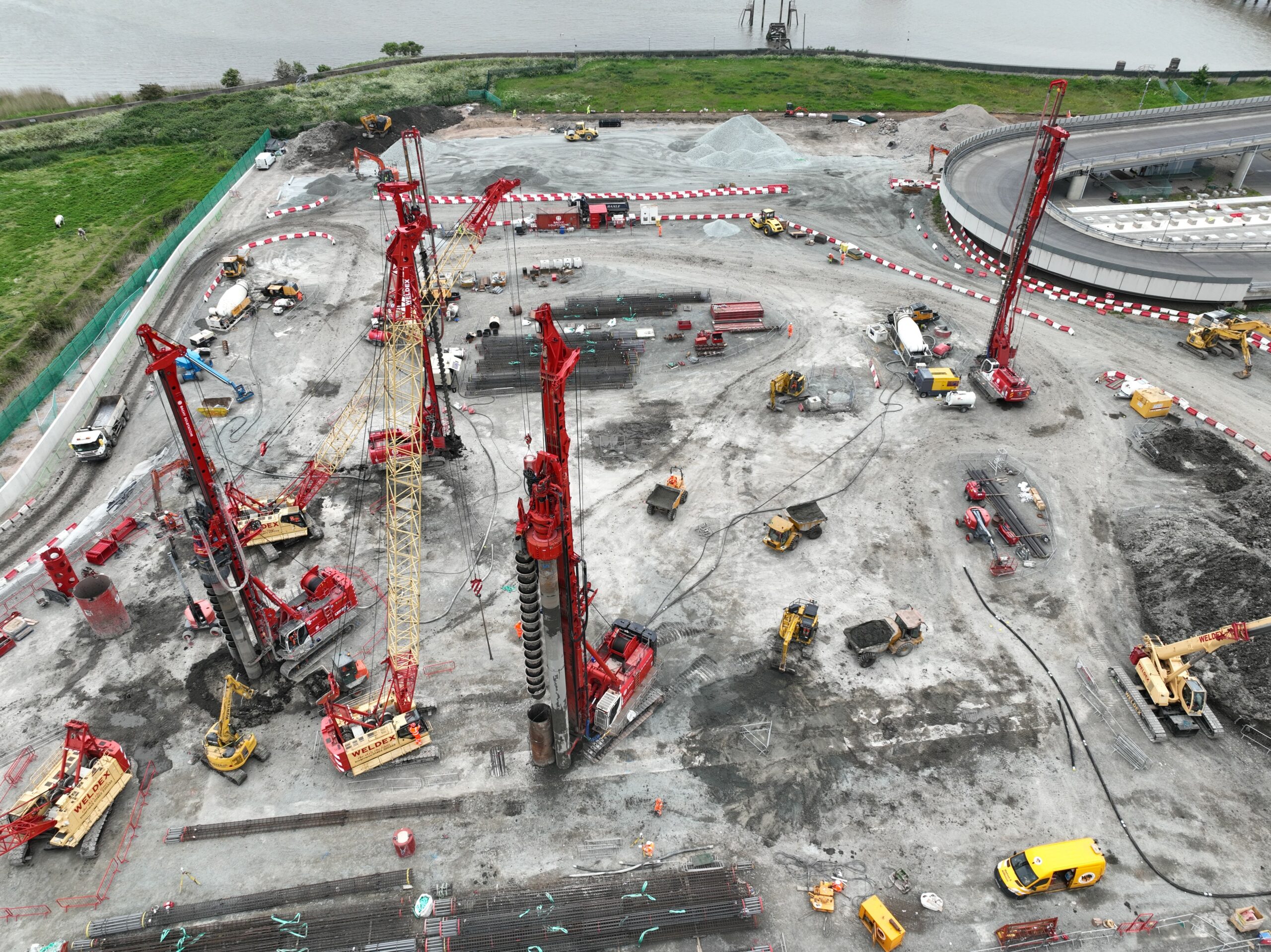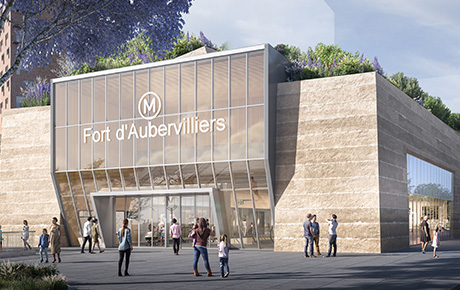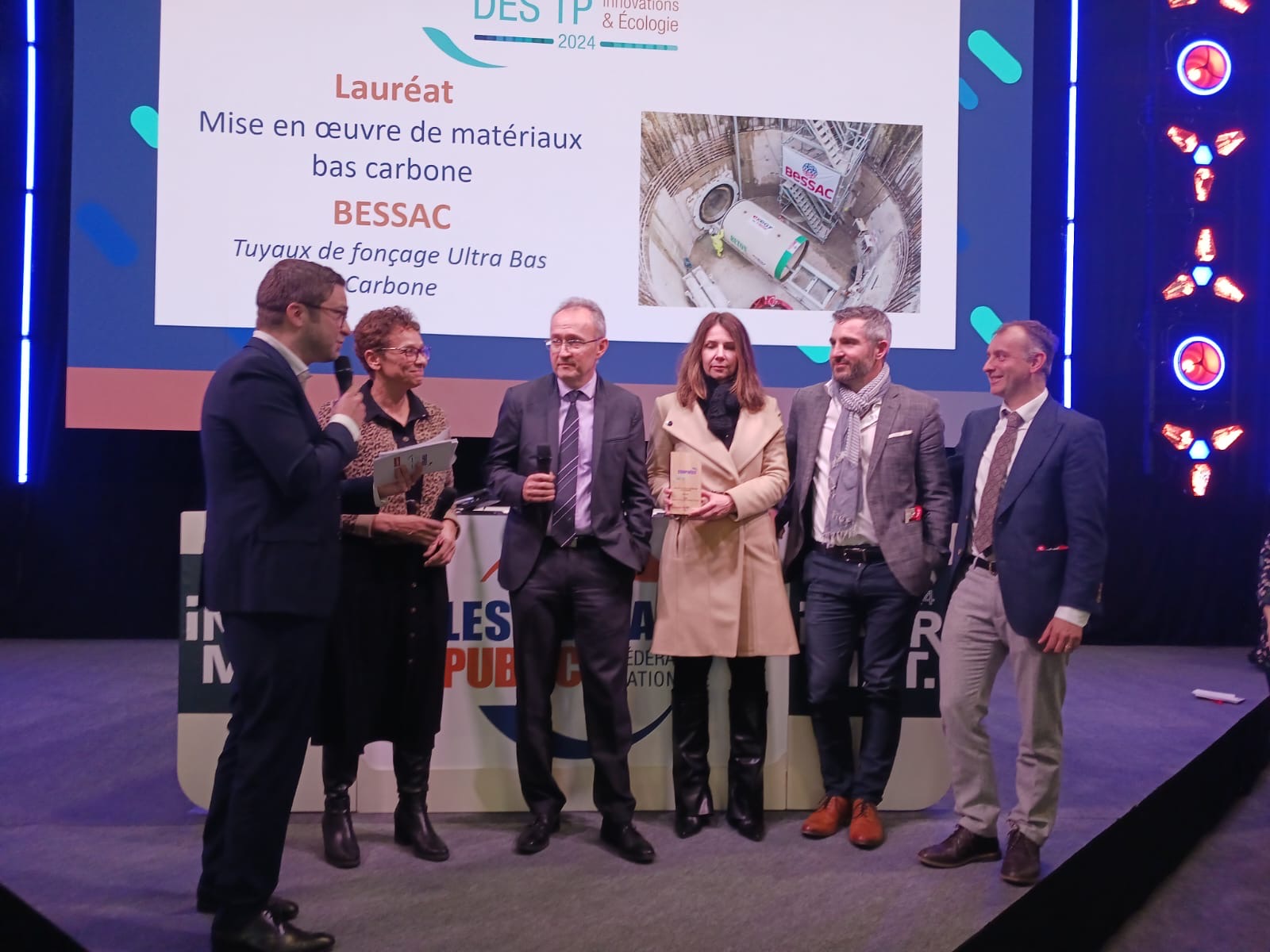Project Description
Context of the project
The port of Montevideo in Uruguay is located in the Rio de la Plata river estuary which delineates the border between Uruguay and Argentina.
Description of the project
The project involves constructing a new port terminal 383m long and 33m wide with a 14m draft at the end of the port, along with an adjoining 36,000m2 wharf for container storage. The future multi-purpose port terminal will be able to accommodate both gantry cranes and mobile cranes. It is a danish quay, composed of prefabricated superstructure and cast-in-place concrete slab, all supported by 256 bored concrete piles, installed from a mobile platform and pontoon.
The project is being carried out on a design-and-build. Complementary soil testing and real-time 3D computer simulation campaigns were required in order to study vessels’ access manoeuvres from the port entrance to the new quay, enabling the project to be tailored to the reality of the site.
Our solution
THE PORT TERMINAL: Piles, static testing, use of platforms and pontoons
Before beginning structural work on the port terminal, static-loading pile tests needed to be designed and conducted using Cimesa, Soletanche Bachy’s Mexican subsidiary. These tests made it possible to validate the theoretical design, adjust the drilling equipment and configure the driving of the pile tubes according to the characteristics of the ground.
The piles – 35m deep on average and to a maximum of 44m – were installed from a mobile metal platform system, supported by and moving along the previously installed piles. This methodology made it possible to overcome the climatic and technical hazards associated with a conventional offshore solution using a pontoon. To install the piles, a metal tube was first driven using vibration, to allow drilling inside it through strata of sand and then clay. A 3m anchor point was then made in the bedrock before concreting of the pile.
Three pontoons were used to complete part of the piles in a specific area where no other solution was possible, as well to place riprap for embankment protection and to demolish a port breakwater.
The port terminal’s superstructure was constructed from prefabricated sections and then a slab poured in situ. The final operations involved installing the port terminal’s services and equipment.
THE WHARF: Vibrocompaction and RCC (Roller Compacted Concrete)
Construction of the container wharf was a major part of the project. This first involved dredging and clearing land that had a low load-bearing capacity, before backfilling with sand with a low fines content, dredged in from an area outside the port.
This sand was then deeply compacted using the vibrocompaction technique. This technique for stabilising granular soil involves placing the particles in suspension by vibration, enabling them to become rearranged to achieve a denser state.
At the end of this compacting phase, all normal utilities were connected (electricity, fire hydrants and lighting) and an RCC layer was proposed as a technical variant – a first for the consortium on this type of structure.
Key figures of the project
ForSHORE, Soletanche Bachy’s port expertise
ForSHORE supports its customers in their projects to build and repair port infrastructure with a strong geotechnical component. These general contractor solutions cover the four stages of port infrastructure projects:
- finance
- design (with environmental resilience)
- build
- asset management
